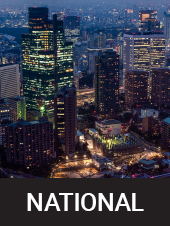Chinatown gets a lot of media coverage – stories about street disorder and crime, debates over gentrification, photo ops for whatever politician is trying to score points with the public. It’s a tourist attraction, a food destination, a historic neighbourhood.
But beyond the headlines and posts, it’s also a place where real people live, work, and play. Where culture isn’t curated for social media, it’s just a way of life. History isn’t confined to a museum; it actually happened on those very streets. Where the city’s biggest challenges aren’t just news stories, they’re right outside the front door.
Through all of its struggles, the building blocks of the community have remained the same. It’s a place of refuge, a sanctuary where those who weren’t accepted elsewhere could find support. A community that has consistently pushed back against racist policies and even outright violence.

Get daily National news
Get the day’s top news, political, economic, and current affairs headlines, delivered to your inbox once a day.
Today, it faces drug use and homelessness, development and displacement, and even the fear of being forgotten. But despite those challenges, the spirit of resilience and resistance remains strong.
Sophie Lui explores Chinatown’s past, present and its future.
PART ONE:
On Sept. 7, 1907, a mob of thousands descended on Chinatown and Japantown, bent on destroying the homes and businesses of the East Asian immigrants. The riot lasted for two days before pouring rain finally brought the violence to an end. Today, 118 years later, it’s a little-known part of Vancouver’s history, which artist and author Henry Tsang is trying to change.
PART TWO:
In the mid-20th century, Vancouver officials were on a mission to build what they considered to be a better city. Parts of the Strathcona and Hogan’s Alley neighbourhoods were demolished to make way for new housing and a freeway. Health officials targeted barbecue meat shops in Chinatown for not keeping their products at the proper temperature. It was all done in the name of progress, but as many in the Chinese community wondered – progress for whom?
PART THREE:
Today, Chinatown faces new threats: drug use and homelessness, the debate over gentrification, even the fear of being forgotten as people move out and businesses shut down. But, as has always been the case here, locals are standing up for their neighbourhood and trying to find ways to bring life back to their streets.
Read the full article here

